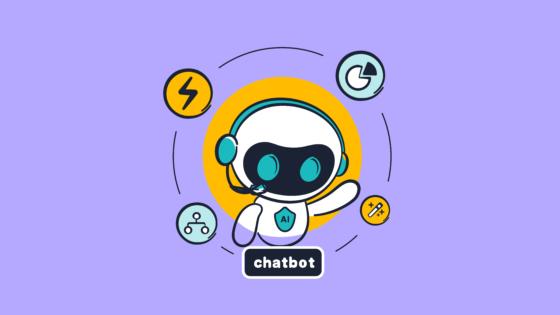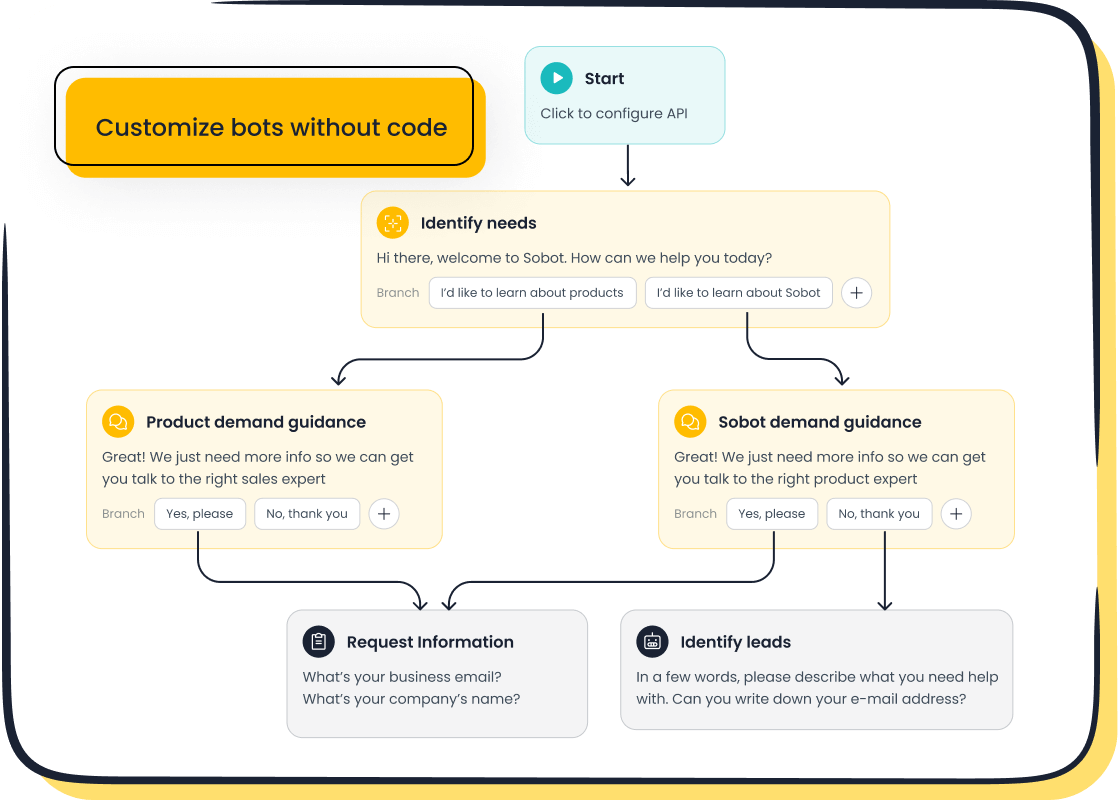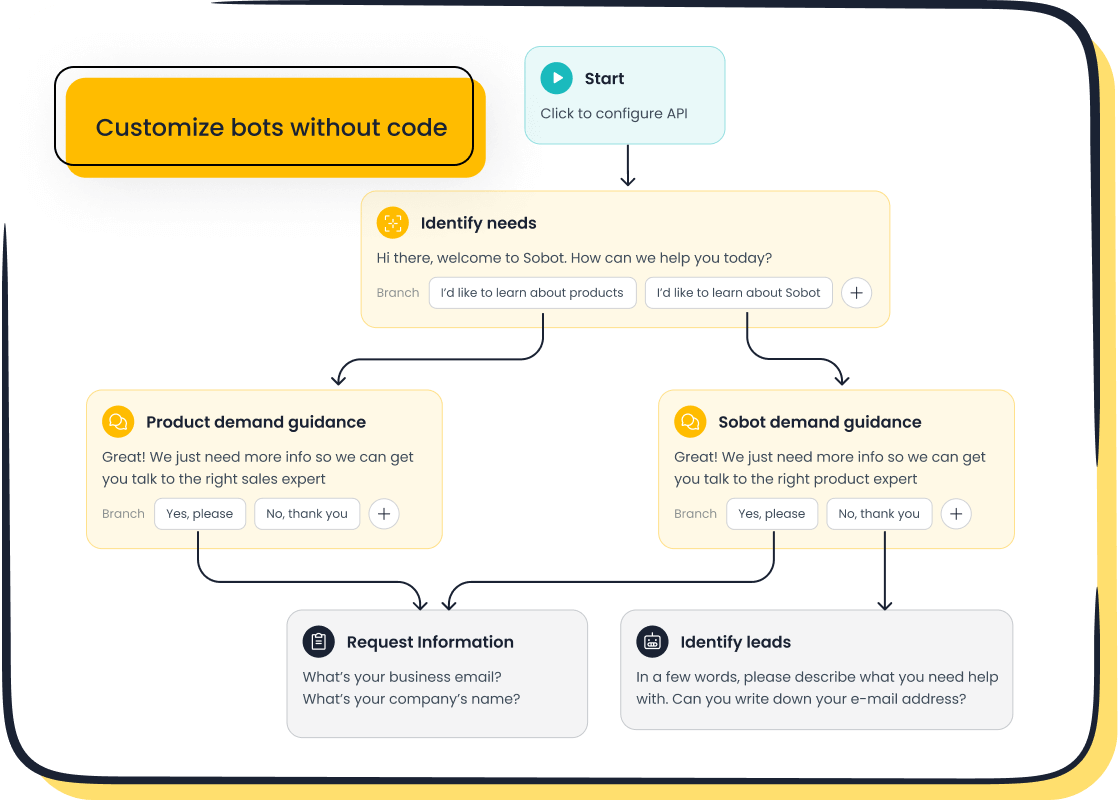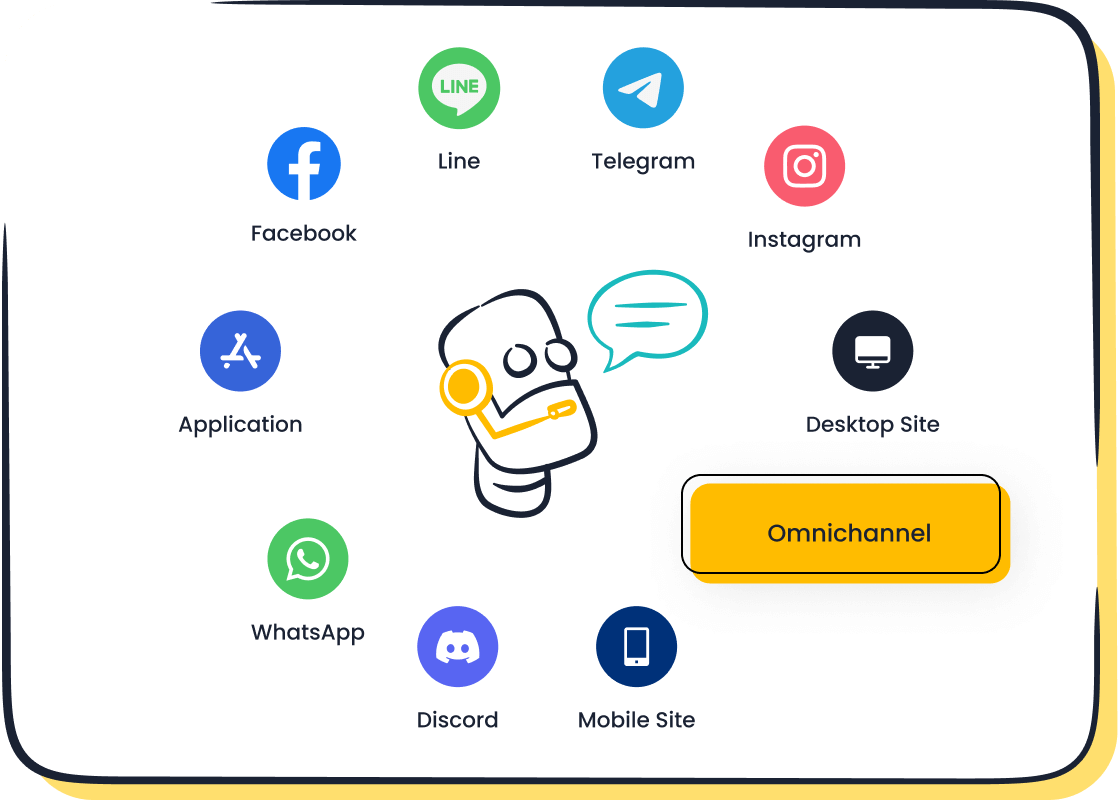Automated Chatbots Compared for Features and Usability

Automated chatbots have transformed customer service by providing instant, efficient support. Businesses now rely on these tools to handle repetitive queries, improve response times, and enhance customer satisfaction. According to McKinsey, AI-enabled customer service delivers personalized experiences that boost engagement. Salesforce research shows that 64% of agents using chatbots focus more on complex issues, improving service quality.
Choosing the right chatbot platform is crucial for success. Factors like features, usability, and scalability determine how well a solution fits your needs. For instance, Sobot offers an AI-powered chatbot that operates 24/7, supports multiple languages, and integrates seamlessly with customer contact systems. These capabilities ensure businesses can meet growing customer expectations while reducing costs.
The global chatbot market is projected to grow at a 23% CAGR by 2028, reflecting the increasing demand for automation. By adopting the right platform, you can stay ahead in this competitive landscape.
Key Features to Evaluate in Automated Chatbots
Natural Language Processing (NLP)
Understanding NLP and its role in chatbots
Natural Language Processing (NLP) is the backbone of modern chatbots. It enables them to understand, interpret, and respond to human language effectively. With NLP, chatbots can analyze user inputs, identify intent, and provide accurate responses. Metrics like the Bot Automation Score (BAS) and NLU Rate measure how well a chatbot understands and processes language. For example, Sobot’s AI chatbot leverages advanced NLP to deliver precise answers, reducing the need for human intervention. This capability ensures smoother interactions and higher customer satisfaction.
Examples of advanced NLP capabilities in top platforms
Advanced NLP features include sentiment analysis, context retention, and intent recognition. These allow chatbots to handle complex queries and maintain meaningful conversations. For instance, Sobot’s chatbot uses a knowledge base built from diverse sources like PDFs and articles to provide instant, context-aware replies. Such features improve the Positive Feedback Rate, which is crucial for evaluating chatbot performance. Platforms with strong NLP capabilities can also reduce the False Positive Rate, ensuring accurate responses every time.
Integration with Customer Contact Systems
CRM, helpdesk, and omnichannel integration
Integration with customer contact systems is vital for seamless operations. Chatbots that connect with CRM tools, helpdesks, and omnichannel platforms provide a unified view of customer interactions. Sobot’s chatbot excels in this area by offering omnichannel support, enabling businesses to interact with customers across WhatsApp, SMS, and other channels. This integration enhances efficiency by centralizing data and automating workflows.
Benefits of seamless integration for customer service efficiency
Seamless integration boosts efficiency by reducing manual tasks and improving response times. For example, integrating chatbots with CRM systems allows sales teams to access chat histories instantly, enabling personalized solutions. According to studies, 64% of agents using AI chatbots focus more on complex problems, improving service quality. Additionally, 57% of businesses report significant ROI from chatbot usage due to minimal investment and high automation success rates.
Scalability and Performance
Managing high volumes of customer interactions
Scalability ensures that chatbots can handle increasing customer interactions without compromising performance. AI-powered chatbots like Sobot’s operate 24/7, managing high volumes efficiently. This capability is essential during peak periods, such as shopping festivals, where customer inquiries surge. Sobot’s chatbot, for instance, autonomously resolves repetitive queries, reducing agent workload and improving productivity by 70%.
Suitability for small businesses and large enterprises
Scalable chatbots cater to businesses of all sizes. Small businesses benefit from third-party integrations that are easy to implement, while large enterprises often require customized solutions. Sobot’s chatbot offers flexibility, making it suitable for both scenarios. Its no-coding-required setup ensures quick deployment, while its robust features support enterprise-level demands. This adaptability makes it a valuable tool for businesses aiming to grow and enhance customer service.
Multi-Language Support
Importance of multilingual capabilities for global businesses
In today’s globalized world, businesses often serve customers from diverse linguistic backgrounds. A chatbot with multilingual capabilities ensures that you can communicate effectively with customers in their preferred language. This feature is especially critical for companies operating in multiple regions, as it helps build trust and improves customer satisfaction. For instance, Sobot’s AI chatbot supports multiple languages, enabling businesses to provide seamless service to a global audience. By offering localized support, you can enhance engagement and reduce the risk of miscommunication.
Multilingual chatbots also play a vital role in scaling your operations. They allow you to cater to international markets without hiring additional agents fluent in various languages. This not only saves costs but also ensures consistent service quality across regions. According to research, 76% of customers prefer buying from brands that offer information in their native language. By adopting a multilingual chatbot, you can meet this expectation and gain a competitive edge.
Platforms offering robust multi-language support
Several platforms offer advanced multilingual features to meet the needs of global businesses. Sobot’s chatbot, for example, excels in this area by providing real-time translations and support for multiple languages. Its intuitive interface allows you to set up language preferences easily, ensuring a smooth user experience. Other platforms, like Messenger Bot and Dialogflow, also offer multilingual support, but Sobot stands out with its ability to integrate seamlessly with omnichannel systems. This makes it an ideal choice for businesses looking to unify their customer interactions across different languages and platforms.
Customization and Personalization
Tailoring chatbots to meet unique business needs
Every business has unique requirements, and a one-size-fits-all approach rarely works. Customizable chatbots allow you to tailor their features to align with your specific goals. For example, you can design workflows that address your most common customer queries or integrate the chatbot with your existing CRM system for a unified view of customer interactions. Sobot’s chatbot offers a no-coding-required setup, making it easy for you to create personalized workflows without technical expertise. This flexibility ensures that your chatbot adapts to your business, not the other way around.
Customization also extends to the chatbot’s tone and personality. You can configure it to reflect your brand’s voice, creating a consistent customer experience. For instance, a retail business might use a friendly and casual tone, while a financial services company might opt for a more professional approach. By personalizing your chatbot, you can make interactions more engaging and relevant, ultimately boosting customer satisfaction.
Examples of customizable chatbot features
Customizable features vary across platforms, but some stand out for their versatility. Sobot’s chatbot, for instance, allows you to build a knowledge base from diverse sources like PDFs and articles. This ensures that your chatbot provides accurate and context-aware responses. Additionally, you can configure proactive messaging to engage customers at the right time, increasing conversions by up to 20%. Other platforms may offer visual flow builders or predefined templates, but Sobot’s point-and-click interface makes customization accessible to businesses of all sizes.
Overview of the Best AI Chatbots for Customer Service

Sobot Chatbot
Key features and advantages of the Sobot Chatbot

Sobot Chatbot stands out as one of the best AI chatbots for businesses aiming to enhance customer support automation. It offers omnichannel capabilities, allowing seamless communication across platforms like WhatsApp and SMS. Its multilingual support ensures global accessibility, breaking language barriers for businesses operating in diverse markets. The chatbot operates 24/7, autonomously resolving repetitive queries and reducing agent workload by 70%. Its no-coding-required setup makes it user-friendly, enabling businesses to deploy it quickly without technical expertise. Additionally, Sobot Chatbot integrates effortlessly with CRM systems, providing a unified view of customer interactions. These features make it a top choice for businesses seeking scalability and efficiency in automated customer service.
How Sobot enhances customer service and support
Sobot Chatbot improves customer satisfaction by delivering instant, accurate responses. It uses AI-powered automation to handle high volumes of inquiries during peak times, ensuring consistent service quality. For example, OPPO, a global smartphone leader, achieved an 83% chatbot resolution rate and a 94% positive feedback rate after implementing Sobot. The chatbot also boosted OPPO’s repurchase rate by 57%, showcasing its ability to drive customer loyalty. By integrating with omnichannel systems, Sobot ensures smooth communication across all customer touchpoints, enhancing the overall service experience.
ChatGPT by OpenAI
Strengths in conversational AI and usability
ChatGPT by OpenAI excels in conversational AI, offering human-like interactions that improve the quality and relevance of responses. Its advanced natural language processing (NLP) capabilities allow it to understand complex queries and provide context-aware answers. Businesses can use ChatGPT for tasks like answering FAQs, assisting with product recommendations, and even generating creative content. Its user-friendly interface makes it accessible to businesses of all sizes, from startups to large enterprises. However, its primary strength lies in its adaptability, as it can be fine-tuned for specific industries or use cases.
Pricing and suitability for different business sizes
ChatGPT offers flexible pricing plans, making it suitable for both small businesses and large organizations. Its pay-as-you-go model allows businesses to scale usage based on their needs, ensuring cost-effectiveness. While smaller companies benefit from its affordability, larger enterprises can leverage its advanced features for comprehensive customer support automation. This flexibility makes ChatGPT a popular choice among businesses looking for scalable and efficient chatbot platforms.
Microsoft Bot Framework
Unique features and integrations for enterprises
Microsoft Bot Framework is designed for enterprises seeking robust chatbot solutions. It supports integration with Microsoft’s ecosystem, including Azure, Dynamics 365, and Teams, making it ideal for businesses already using these platforms. The framework provides tools for building, testing, and deploying chatbots, offering high customization options. Its scalability ensures that businesses can handle large volumes of customer interactions without compromising performance. Additionally, it supports multiple languages, enabling global reach.
Pros and cons for customer service applications
The Microsoft Bot Framework offers enterprise-grade security and reliability, making it a trusted choice for large organizations. Its integration capabilities streamline workflows, enhancing operational efficiency. However, its complexity may pose challenges for smaller businesses or those without technical expertise. Despite this, its advanced features and scalability make it a strong contender among leading AI chatbots for customer service.
Zendesk Answer Bot
Features tailored for customer support teams
Zendesk Answer Bot is designed to streamline customer service operations. It uses AI to resolve common queries, allowing your team to focus on complex issues. This chatbot integrates with Zendesk's ticketing system, ensuring seamless workflows. It provides instant responses, reducing wait times and improving customer satisfaction. For example, businesses using Zendesk Answer Bot report faster resolution rates and higher efficiency in handling repetitive tasks. Its omnichannel capabilities enable you to engage customers across platforms like email, chat, and social media. This ensures consistent service quality, regardless of the communication channel.
Pricing and ease of use
Zendesk Answer Bot offers flexible pricing plans, making it accessible to businesses of various sizes. Its user-friendly interface simplifies setup and management, even for those without technical expertise. The platform provides detailed analytics, helping you track performance and optimize workflows. While it caters to customer support automation needs effectively, its pricing may be higher compared to some other chatbot platforms. However, the value it delivers in terms of efficiency and customer satisfaction often justifies the cost.
Intercom
Focus on customer engagement and support automation
Intercom emphasizes customer engagement through personalized interactions. Its AI-powered chatbots assist with onboarding, lead generation, and customer support automation. These bots proactively engage users, offering tailored solutions based on their behavior. For instance, businesses using Intercom often see improved conversion rates due to its targeted messaging features. The platform also supports omnichannel communication, ensuring you can connect with customers across multiple touchpoints. This makes it a versatile tool for businesses aiming to enhance both engagement and support.
Limitations and pricing details
Intercom's pricing structure may pose challenges for smaller businesses. While it offers robust features, the cost can increase as your customer base grows. Additionally, some users find its advanced features require a learning curve. Despite these limitations, Intercom remains one of the best chatbot software options for businesses prioritizing engagement. Its ability to integrate with other platforms and deliver AI customer support makes it a strong contender in the chatbot market.
Chatbot Comparison: Features, Usability, and Pricing
Key Metrics for Chatbot Comparison
Features (NLP, integrations, scalability, etc.)
When comparing chatbots, features play a crucial role in determining their effectiveness. Advanced natural language processing (NLP) ensures chatbots understand user intent and provide accurate responses. Integration capabilities allow chatbots to connect with tools like CRM systems, enabling seamless workflows. Scalability is another vital feature, ensuring the chatbot can handle growing customer interactions without lag. For example, Sobot’s AI chatbot excels in these areas by offering multilingual support, omnichannel integration, and 24/7 availability. These features make it a reliable choice for businesses of all sizes.
Usability (ease of setup, user interface)
Usability determines how quickly you can deploy and manage a chatbot platform. A user-friendly interface and no-coding-required setup simplify the process, even for non-technical users. Sobot’s chatbot builder offers a point-and-click interface, making it easy to design workflows and automate tasks. This simplicity ensures businesses can focus on customer support automation without worrying about technical complexities. A well-designed chatbot platform also enhances the user experience, leading to higher customer satisfaction.
Pricing (free vs. paid plans, enterprise options)
Pricing varies across chatbot platforms, with options ranging from free plans to enterprise-level solutions. Free plans often provide basic features, while paid plans unlock advanced capabilities like AI-powered chatbots and integrations. Sobot offers cost-effective pricing, helping businesses save up to 50% on agent costs through automation. Its flexible plans cater to both small businesses and large enterprises, ensuring you get value for your investment.
Comparison Table of Chatbot Platforms
Summarizing the key differences between platforms
The table below highlights the differences between popular chatbot platforms based on features, usability, and pricing:
| Platform | Key Features | Usability | Pricing Options |
|---|---|---|---|
| Sobot | NLP, multilingual, omnichannel | No-coding setup, intuitive UI | Flexible plans for all sizes |
| ChatGPT | Advanced conversational AI | Easy to use | Pay-as-you-go model |
| Microsoft Bot | Enterprise-grade integrations | Requires technical expertise | Custom enterprise pricing |
Highlighting Sobot Chatbot's unique advantages
Sobot stands out as one of the best ai chatbots due to its comprehensive feature set and ease of use. Its chatbot builder allows you to create workflows without coding, saving time and effort. The platform’s scalability ensures it adapts to your business growth, while its multilingual capabilities make it ideal for global operations. By integrating with CRM systems and offering 24/7 support, Sobot delivers unmatched efficiency and customer satisfaction.
How to Choose the Right Chatbot for Your Business
Identifying Business Needs
Customer service, sales, or marketing focus
Before selecting a chatbot platform, you need to define its purpose. Are you looking to improve customer service, boost sales, or enhance marketing efforts? For example, if your goal is to provide 24/7 customer support, an AI chatbot like Sobot can handle repetitive queries and free up your team for complex tasks. Businesses focused on sales might benefit from chatbots that engage customers with proactive messages, increasing conversions. Marketing teams can use chatbots to collect leads or share personalized promotions. Identifying your focus ensures the chatbot aligns with your business automation goals.
Volume of interactions and scalability requirements
The number of customer interactions your business handles daily plays a key role in choosing the right chatbot. If you manage high volumes, scalability becomes essential. A scalable chatbot platform, such as Sobot, can handle peak periods like holiday sales without compromising performance. Small businesses with fewer interactions might prioritize ease of use and quick deployment. By understanding your interaction volume, you can select a chatbot that grows with your business while maintaining efficiency.
Evaluating Features and Usability
Prioritizing essential features for your use case
Not all chatbots are created equal. You should prioritize features that meet your specific needs. For instance, if your business serves a global audience, multilingual support is critical. Sobot’s chatbot offers this feature, ensuring seamless communication across languages. Integration with CRM systems is another must-have for businesses aiming to unify customer data. By focusing on essential features like these, you can maximize the value of your chatbot investment.
Testing usability with free trials or demos
Testing a chatbot platform before committing is crucial. Many platforms, including Sobot, offer free trials or demos. Use these opportunities to explore the interface, test features, and evaluate ease of use. Check if the chatbot requires coding knowledge or if it provides a user-friendly setup. A trial period helps you determine whether the platform meets your expectations and fits your team’s skill level.
Considering Budget and ROI
Balancing cost with expected benefits
Budget is a critical factor when choosing a chatbot. Compare the cost of the platform with the benefits it offers. For example, Sobot’s chatbot reduces agent workload by 70%, saving up to 50% on operational costs. This makes it a cost-effective solution for businesses of all sizes. Look for platforms that provide clear pricing structures and avoid hidden fees. Balancing cost with features ensures you get the best value for your investment.
Long-term value of investing in automation
Investing in AI chatbots delivers long-term benefits. Automation reduces repetitive tasks, allowing your team to focus on strategic goals. For instance, Sobot’s chatbot not only improves efficiency but also boosts customer satisfaction with instant responses. Over time, these improvements lead to higher retention rates and increased revenue. By considering the long-term value, you can make a decision that supports your business growth.
The Role of Automated Chatbots in Enhancing Customer Service

Improving Efficiency and Reducing Costs
How chatbots handle repetitive queries autonomously
Chatbots excel at managing repetitive queries, freeing up your team to focus on more complex tasks. These AI-powered tools can instantly respond to common questions like order status, return policies, or account issues. By automating these interactions, you reduce the need for human intervention. For example, Sobot’s chatbot operates 24/7, autonomously resolving up to 83% of inquiries. This ensures faster response times and improved efficiency, even during peak periods.
Examples of cost savings with Sobot Chatbot
Using chatbots can significantly cut operational costs. Sobot’s chatbot reduces agent workload by 70%, saving businesses up to 50% on staffing expenses. Its ability to triage queries and provide self-service options minimizes the need for additional agents. For instance, OPPO, a global smartphone leader, achieved remarkable cost savings by implementing Sobot’s chatbot. The company optimized its customer service operations while maintaining high satisfaction rates.
Enhancing Customer Satisfaction
Providing 24/7 support and instant responses
Customers expect instant support, regardless of the time. Chatbots meet this demand by providing 24/7 availability. They deliver instant responses, ensuring customers don’t have to wait for assistance. Sobot’s chatbot, for example, uses a robust knowledge base to provide accurate answers in real-time. This improves the overall customer experience and builds trust in your brand.
Real-world success stories, including OPPO's experience
OPPO’s partnership with Sobot highlights the impact of chatbots on customer satisfaction. By integrating Sobot’s chatbot into its customer service system, OPPO achieved a 94% positive feedback rate. The chatbot’s ability to handle repetitive queries allowed human agents to focus on complex issues, enhancing service quality. This approach not only improved customer satisfaction but also increased OPPO’s repurchase rate by 57%.
Driving Business Growth
Boosting conversions through proactive engagement
Chatbots play a crucial role in driving conversions. They engage customers proactively, offering personalized recommendations and timely assistance. Sobot’s chatbot uses proactive push messaging to guide customers through their journey, increasing conversions by 20%. This feature ensures you capture leads and turn them into loyal customers.
Increasing customer retention and loyalty
Retaining customers is vital for long-term growth. Chatbots enhance retention by providing consistent, high-quality support. Sobot’s chatbot integrates seamlessly with CRM systems, enabling personalized interactions that foster loyalty. By addressing customer needs promptly and effectively, you create a positive experience that encourages repeat business.
Choosing the right chatbot requires careful evaluation of features, usability, and pricing. These factors ensure the solution aligns with your business goals. Chatbots like Sobot demonstrate how automation can enhance efficiency, reduce costs, and improve customer satisfaction. By exploring the best chatbot software, you can unlock new opportunities for growth. As businesses increasingly adopt chatbots, they transform customer service into a seamless, 24/7 experience. Start your journey today and discover how the right chatbot can revolutionize your operations.
FAQ
What is the main purpose of an AI chatbot?
An AI chatbot automates customer interactions by handling repetitive queries and providing instant responses. It improves efficiency, reduces costs, and enhances customer satisfaction. For example, Sobot’s AI chatbot operates 24/7, resolving up to 83% of inquiries autonomously, which allows your team to focus on complex tasks.
Can chatbots handle multiple languages?
Yes, many chatbots, including Sobot’s AI chatbot, support multiple languages. This feature helps businesses serve global customers effectively. For instance, Sobot’s multilingual capabilities ensure seamless communication in various languages, improving customer satisfaction and enabling businesses to expand into international markets.
Do chatbots require coding knowledge to set up?
Not always. Platforms like Sobot offer no-coding-required setups. You can use a point-and-click interface to design workflows and deploy the chatbot quickly. This user-friendly approach makes it accessible for businesses of all sizes, even those without technical expertise.
How do chatbots improve customer service?
Chatbots enhance customer service by providing instant, accurate responses and 24/7 availability. They reduce wait times and improve efficiency. For example, Sobot’s chatbot integrates with CRM systems, offering a unified view of customer interactions and ensuring personalized support.
Are chatbots cost-effective for small businesses?
Yes, chatbots are highly cost-effective. Sobot’s AI chatbot reduces agent workload by 70% and saves up to 50% on operational costs. Small businesses benefit from automation by minimizing staffing expenses while maintaining high-quality customer service.
See Also
Simple Ways to Integrate Chatbots on Your Website
Tips for Selecting the Ideal Chatbot Software
Best 10 Chatbots for Websites This Year 2024